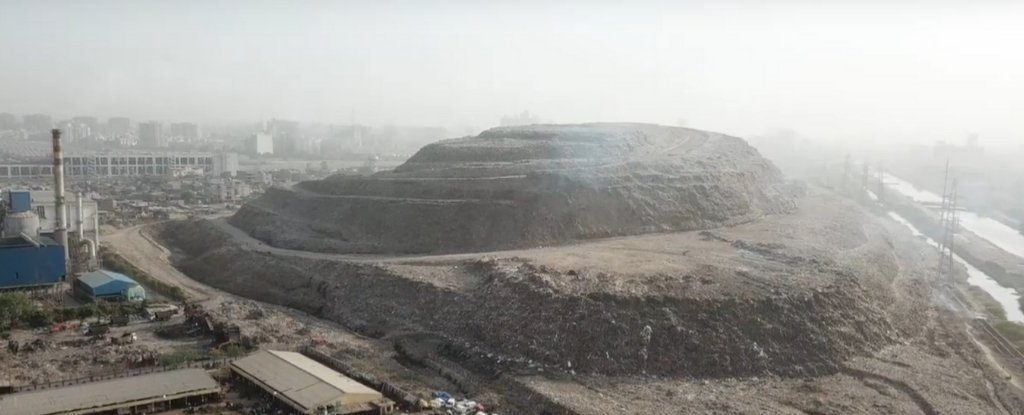As tall as the towers of London Bridge, New Delhi's Ghazipur
landfill continues to grow at a startling pace. Within a year, it is set to
rise higher than the Taj Mahal, one of the country's most iconic monuments.
Nicknamed 'Mount Everest' by locals, the expansive pile of
fetid matter is already more than 65 metres (213 feet) tall. As India's Supreme
Court recently warned, it's well overdue for some aircraft warning lights.
When Ghazipur first opened in 1984, this was - of course -
never the intention. By 2002, the landfill had reached capacity at 20 metres
and should have been closed. Today, the 21 million people living in New Delhi
rely mainly on this ever-growing monstrosity and two other landfills, all of
which hit maximum volume at least a decade ago.
"About 2,000 tonnes of garbage is dumped at Ghazipur
each day," a Delhi municipal official told the AFP on condition of
anonymity. That amounts to about 10 metres of growth each year.
Not only is the huge expanse of rubbish an eyesore, it is
also a hazard; on multiple occasions, the East Delhi Municipal Corporation
(EDMC) has tried and failed to shut it down.
Last year, the complacency of officials turned fatal. Two locals
were killed in a landslide after a section of the mountain collapsed from heavy
rains. The deaths prompted a closure of the landfill and a landfill
rehabilitation analysis from the US Environmental Protection Agency (EPA).
"Waste disposal practices are not well controlled which
has led to the formation of steep and unstable slopes," wrote the authors
of the report.
"Subsurface fires, smoke emissions from the surface of
the waste, animals scavenging waste, and informal sector waste recyclers were
all observed during the November 2017 site visit."
The conclusions were simple: Waste filling at the top of the
landfill should cease immediately and the EDMC should close the Ghazipur site
and move operations to a new landfill as quickly as possible.
Screen Shot 2019 06 05 at 1.30.32 pm
(Climate and Clean Air Coalition)
For all that, the closure only lasted a few days, and the
open dump site has continued along the same lines ever since.
As the stinky structure continues to grow with no end in
sight, the risks for locals are manifold. Because the waste on this mountainous
pile is loose, uncompacted and exposed, it encourages aerobic decomposition and
generates heat and methane.
This means that under the right conditions, spontaneous
fires can spark easily, further destabilising the whole structure.
During the landfill analysis, researchers also noticed a
tension crack about 60 metres long and half a metre wide, a further indication
of potential slope failures.
What's more, the landfill has absolutely no liner system,
which means it is sitting straight on the ground. All dumps produce something
called leachate, but without something to catch this black liquid at Ghazipur,
the whole thing oozes continuously into a local canal.
"It all needs to be stopped as the continuous dumping
has severely polluted the air and ground water," Chitra Mukherjee, the
head of Chintan, an environment advocacy group, told the AFP.
Residents of East New Delhi were complaining about the
stinking pile long before a landslide claimed two of their own. Some have said
the poisonous smell makes breathing virtually impossible. A local doctor said
she sees about 70 people each day - mostly for respiratory and stomach ailments
caused by the polluted air. Many are babies and children.
Between 2013 and 2017, it's estimated that Delhi saw 981
deaths from acute respiratory infection.
Indian cities are responsible for millions of tonnes of
waste annually, and the numbers are only projected to rise. Members of the Aam
Aadmi party, which is the ruling party of Delhi, have responded to a petition
to clean up the "ticking time bomb" within two years.
They are also resisting a plan by city authorities, run by
the right-wing Bharatiya Janata Party, to create two new landfills on the
nearby Yamuna flood plains, which drain directly into a river.
India is one of the world's largest garbage producers. The
country is also facing a waste crisis. Unless something is done soon, the
Ghazipur landfill and others like it may soon grow too large to clean up.

Comments
Post a Comment